As a professional installer, understanding the key differences between bifold vs sliding doors is crucial for providing expert guidance to your customers. Our comprehensive guide will help you navigate the distinct advantages of each door system, enabling you to make informed recommendations based on specific project requirements and customer preferences.
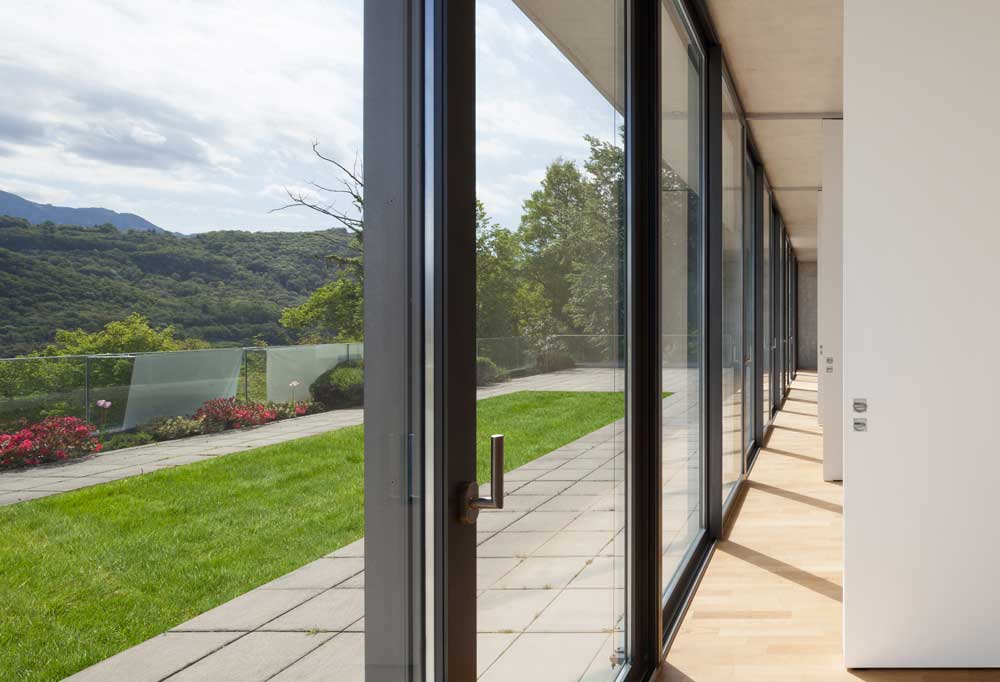
Which door type best suits your customer’s needs?
When advising customers on choosing between a bifold door and sliding door system, whether for a commercial job or residential, several factors need careful consideration. Let’s explore the key aspects that will help you guide your customers towards the right choice for their project.
Space Efficiency and Operation
Bifold doors offer unique versatility in terms of opening mechanisms. These doors fold door panels back in a concertina style, creating a whole opening that connects indoor and outdoor space seamlessly. The traffic door option provides convenient everyday access without opening the entire system.
Sliding doors, particularly large glass panels in modern patio door designs, move horizontally along a bottom track. This door type requires less floor space for operation, making them an excellent choice for areas where space might be limited.
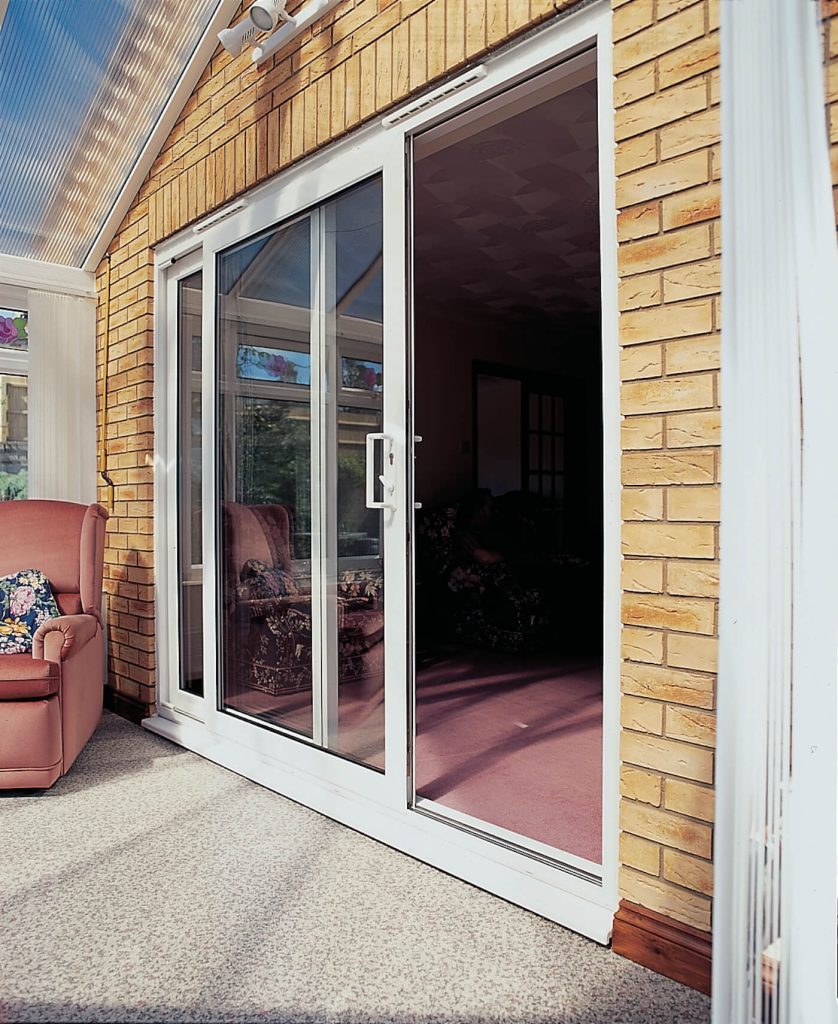
Aesthetics and Views
Both door systems offer outstanding aesthetic appeal, but in different ways:
Sliding Door Benefits:
- Larger panes of glass with minimal frame interruption
- Slim sightlines offering a better view of the outside space
- Less frame visibility when closed
- Creating a seamless transition between spaces
Bifold Door Advantages:
- Complete opening of the entire wall when fully operated
- Flexibility in different ways of opening
- Multiple configuration options
- Contemporary aluminium frame designs
Natural Light and Visual Impact
Both door types excel at maximising natural light, but their impact varies.
Sliding doors feature large panels of glass with minimal frame interference, providing uninterrupted views and consistent light flow. The latest innovation in sliding door systems emphasizes slim sightlines and larger glass sections.
Bi folds can open up an entire wall, creating a dramatic effect and completely removing the barrier between internal and external spaces. When closed, they feature more visible frames but still offer excellent light penetration.
Energy Performance and Thermal Efficiency
Modern door systems must deliver outstanding thermal performance. Both options offer:
- Advanced thermal breaks
- High-performance glazing options
- Weather-resistant seals
- Level threshold possibilities
Installation and maintenance considerations
For installers, understanding installation requirements is crucial. For bifold doors, installation demands meticulous attention to detail and precise technical knowledge. The process requires exact alignment of multiple door panels and careful consideration of weight distribution to ensure smooth operation. Installers must pay particular attention to the running gear and tracking systems, as these components are crucial for long-term performance. Regular maintenance is essential, including periodic adjustment of hinges, rollers, and locking mechanisms to maintain optimal operation. This higher maintenance requirement should be clearly communicated to customers to ensure they understand their ongoing responsibilities as owners.
Sliding doors, by comparison, offer a more straightforward installation process and reduced maintenance requirements. With fewer moving parts and a simpler operating mechanism, these systems are generally more robust and less prone to adjustment needs over time. The linear tracking system and reduced number of mechanical components mean less potential for operational issues, making them an attractive option for customers seeking a low-maintenance solution. However, installers should still ensure proper alignment during installation and recommend regular cleaning of tracks and rollers to maintain smooth operation.
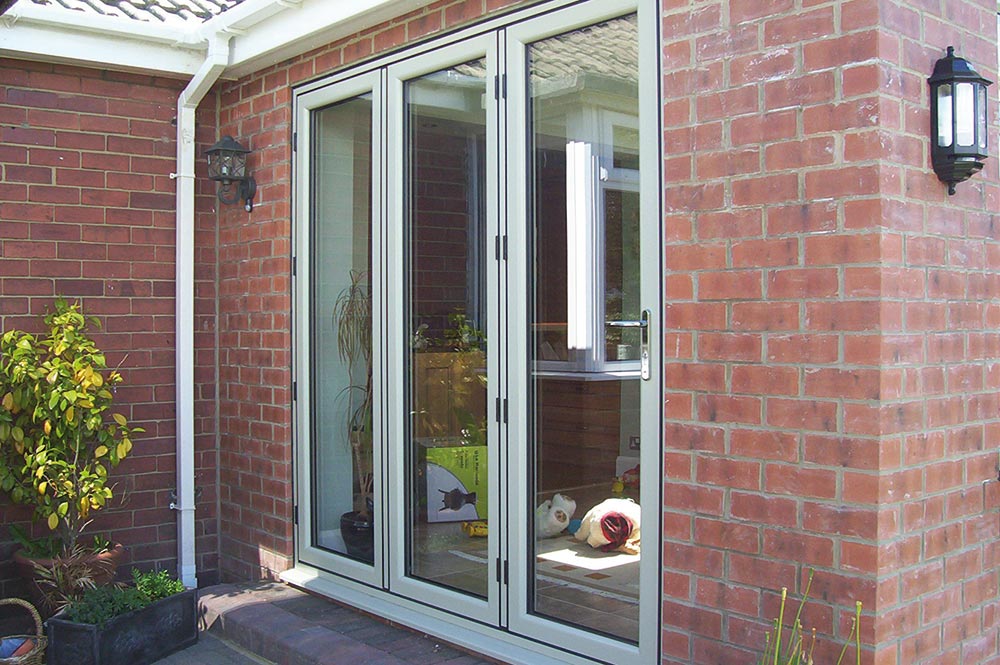
Making the right recommendations to customers
When discussing investment considerations with customers, it’s important to provide a clear understanding of the cost implications for both door types. Bifold doors typically represent a higher initial investment due to their complex mechanical systems and multiple moving parts, reflecting their premium status and ability to create maximum opening capabilities. While this higher cost often correlates with their versatility and dramatic impact, customers should also be aware that the increased number of moving components may require more regular maintenance over time. In contrast, sliding doors generally offer a more cost-effective solution while still providing excellent value, particularly for large, glazed areas. Their simpler mechanism and fewer moving parts typically result in lower maintenance costs over the lifetime of the installation.
Floor space and usage considerations
The final recommendation should always be tailored to the customer’s specific circumstances and preferences. For properties with limited floor space, sliding doors often prove the more practical choice as they don’t require additional clearance for operation. However, where customers prioritise creating a seamless indoor-outdoor living space with maximum opening width, bifold doors are the optimal solution. Usage patterns should also influence the decision – for instance, properties requiring frequent access might benefit from a bifold configuration with a traffic door, while both door types suit seasonal use equally well. Style preferences play a crucial role too – sliding doors are ideal for achieving a minimalist, contemporary aesthetic with uninterrupted views, while bifold doors excel in creating flexible living spaces that can be completely opened up when desired.
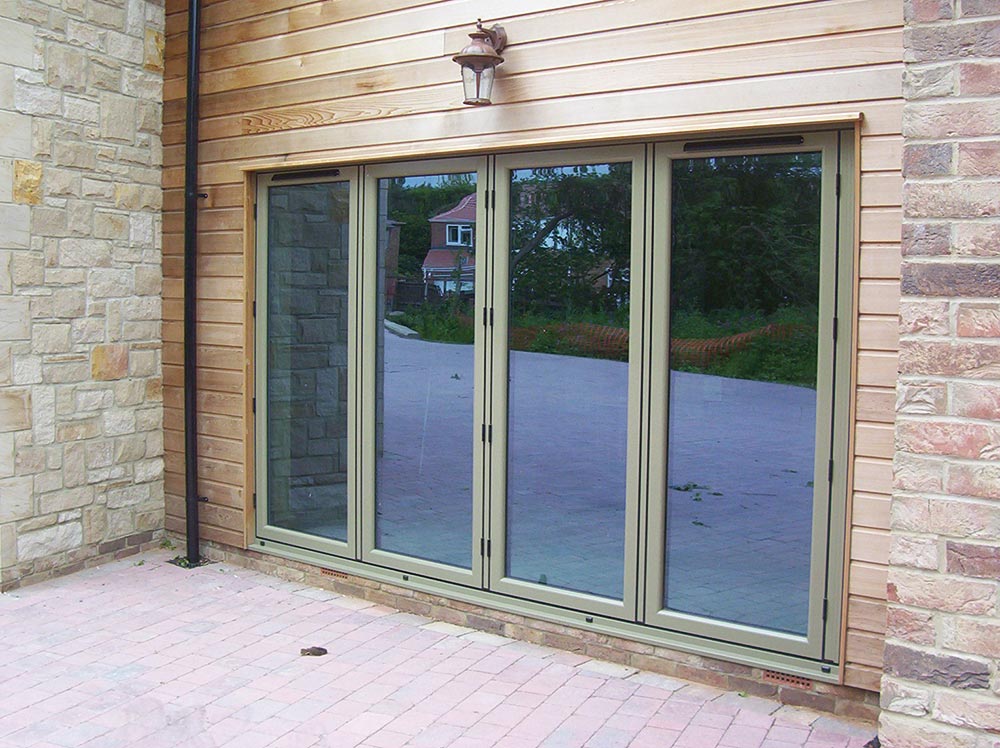
TWR Group’s door range: Excellence in choice
As a leading UK aluminium and uPVC fabricator, TWR Group offers an outstanding selection of both bifold and sliding door systems, each crafted to meet specific project requirements:
Smart Visofold 1000 Bi-fold Door
The Visofold 1000 stands as one of the UK’s most popular aluminium bifold door systems, offering versatility for both commercial and residential applications, thanks to attractive, slim-line profiles and impressive openings for a seamless transition from inside to out. Its key features include:
- Slim-line profiles creating impressive openings
- Document L compliant
- EPDM high-quality gaskets and weather brushes for superior weather resistance
- Exceptional U-Value of 1.5 thanks to integrated polyamide thermal breaks
- Multi-point lock mechanisms and shootbolt locking for enhanced security
- Maximum sash weight of 100kg
- Fixed maximum height of 2500mm and width of 1200mm per sash
- Typical sightline of 133mm and frame depth of 70mm
- Multiple opening configurations with low or rebated threshold options
Perfect for domestic installations as an alternative to sliding doors or within conservatories, the Visofold 1000 also excels in commercial settings such as bars, cafés, and restaurants.
Visofold 1000 Slim Bi-Fold Door
This innovative, flexible, super-slim bifold system takes bifold door design to the next level, featuring:
- Reduced 122mm sightlines (10mm slimmer than standard)
- Innovative ‘Quick-Glaze Bead’ for faster installation
- Internal or external folding options
- Integral polyamide thermal break delivering U-Values up to 1.5
- Kitemarked and PAS24 accredited
- Multi-point locking mechanisms and shoot-bolt locks
- Integrated gasket system for quicker installation
- Available in standard and non-standard colours, including dual colour options
Available in a range of opening configurations to suit any application, Visofold 1000 Slim doors can be folded internally or externally and can have either a low or rebated threshold, with its ‘Quick-Glaze Bead’ specially designed to be easy to remove making them perfect for retail, and light commercial applications.
The Visofold 1000 Slim is a highly-versatile, easy-to-operate system, capable of opening an entire wall, with its slimmer profiles make the glazed area even larger to provide uninterrupted views and maximum light.
Visoglide Plus Sliding Patio Door
This superior sliding door system combines style with functionality and easy operation with robust performance:
- Document L compliant design
- Inline sliding or lift and slide operation
- Glass panels up to 2500mm wide
- Maximum sash weight of 250kg
- Extended polyamide thermal break achieving U-Value of 1.6 when installed with a suitable sealed unit
- Super slim interlock options for peace of mind
- Compatible with auto slide opening mechanisms
- Available in single and dual colour options in a wide choice of standard and non-standard finishes.
- Suitable for both commercial entrances and residential installations
The Visoglide Plus improves both strength and weather resistance, with multiple pane configurations available to flood living and social areas with natural light and it offers an excellent alternative to bifolds when maximising unobstructed views is a priority.
Suitable for use as either sliding commercial entrances where large openings are required, or as dynamic residential sliding doors, it is a fully flexible solution for homes and businesses. Visoglide Plus Sliding Doors are also suitable for use with auto slide opening mechanisms.
Syncro Sliding Patio Door
This modern uPVC sliding door system from Eurocell delivers contemporary performance:
- Impressive U-values: 1.3 for double glazed and 1.0 for triple glazed units
- Flexible configuration options: 2, 3, and 4 pane doors with optional side windows
- Maximum width of 3.5m (2 pane) and sash width of 1750mm
- PAS24 certification meeting Document Q requirements
- BS6375 compliance as standard
- Grey substrate option available
- Innovative soft close mechanism
- Compatible with both double and triple glazing
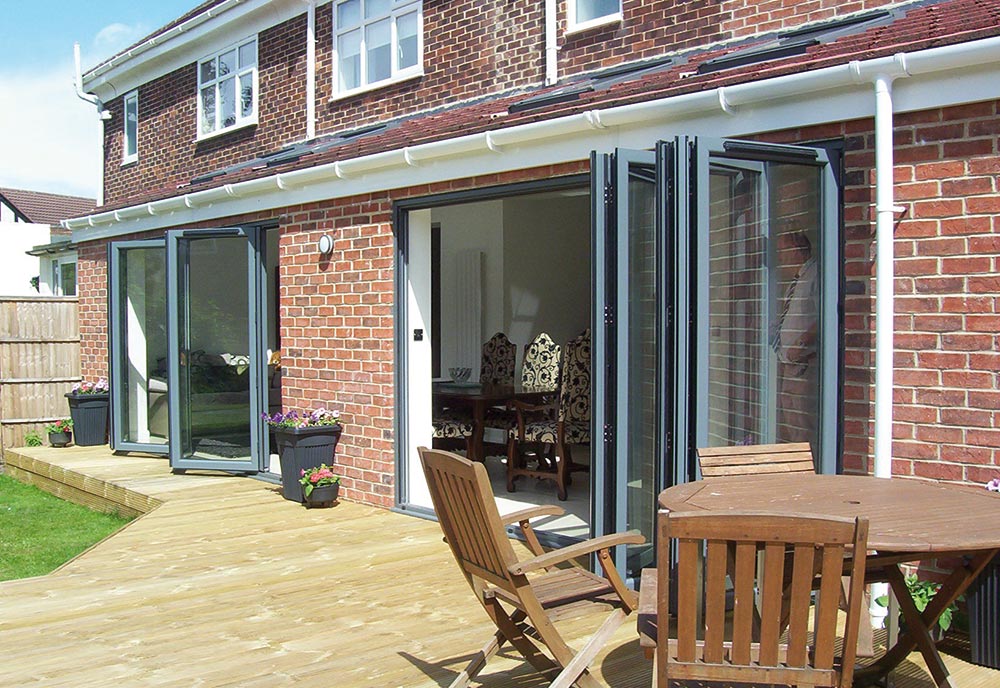
Expert support and design solutions
TWR Group’s expertise extends beyond product supply. As specialists in both bifold and sliding patio doors, we support installers with:
- Comprehensive technical guidance
- Installation support
- Product selection assistance
- Commercial and residential project expertise
- Dedicated customer service
Our online bifold door designer tool allows installers to visualise different configurations and options with customers, making the specification process smoother and more interactive.
Contact TWR Group for the best bifold vs sliding doors advice
Both bifold and sliding doors offer unique benefits, and the right choice depends on specific project requirements and personal preference. As an installer, understanding these differences enables you to provide valuable guidance to your customers.
For expert support and access to premium door systems, contact TWR Group’s specialist team. Their comprehensive range of both bifold and sliding doors, combined with technical expertise, ensures you can deliver the perfect solution for every project.
